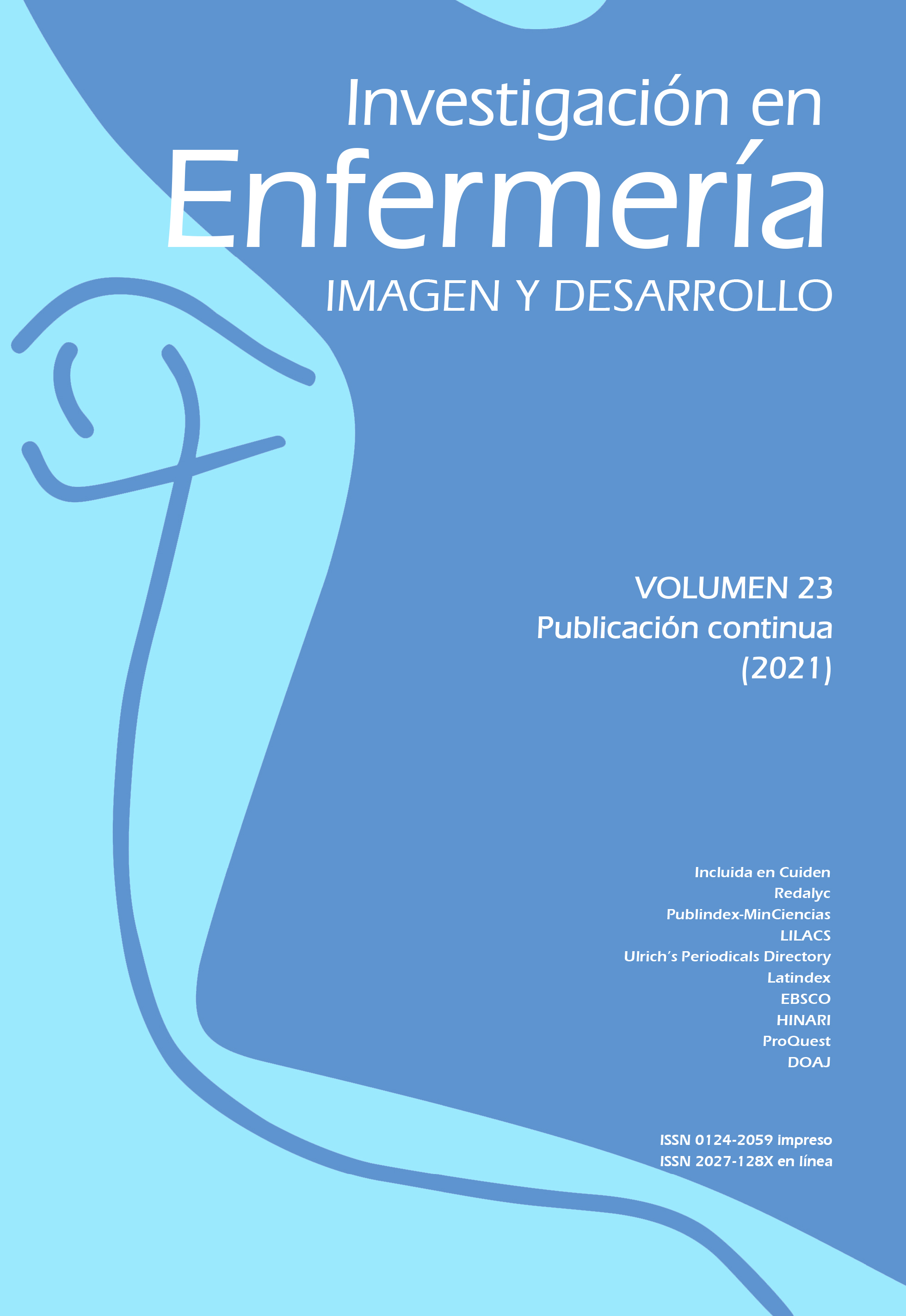Resumen
Introducción: educación continua es una inversión personal y profesional necesaria a lo largo de la vida profesional de los enfermeros, porque amplía y perfecciona conocimientos técnicos, científicos y habilidades prácticas. Objetivo: describir la participación de enfermeros de la Región de las Américas en los cursos ofrecidos por el Campus Virtual de Salud Pública antes y al comienzo de la pandemia de la COVID-19, según género, edad, nivel educativo y lugar de trabajo. Método: estudio descriptivo cuantitativo. Se analizaron datos de los participantes de los cursos del periodo de enero del 2013 hasta junio del 2020 del Campus Virtual de Salud Pública. Población de estudio: enfermeros de la Región de las Américas que tomaron cursos virtuales. Se calcularon medidas de estadística descriptiva y proporciones de las variables sociodemográficas de los participantes de manera confidencial con autorización y credenciales para acceder datos en la plataforma. Resultados: a los 515 cursos virtuales ofrecidos por el Campus Virtual de Salud Pública se matricularon 368.018 enfermeros. Los porcentajes de enfermeros con certificado según el país de procedencia son los siguientes: Ecuador con 64,7%, México con 58,3%, Honduras con 52,9%, Paraguay con 48,6%, Colombia con 45,2%, Uruguay con 42,2%, Argentina con 38,0%, Chile con 22,7%, Perú con 21,3%, y Brasil con 9,7%. El 83,1% eran mujeres, el 75% tenía un nivel educativo universitario y el 40% tenía edades entre 26 y 35 años y el 47,1% trabajaba en hospitales. Conclusión: la pandemia de la COVID-19 refuerza la importancia de la educación continua virtual en la que los enfermeros pueden mejorar sus conocimientos, potencializar sus habilidades, y calificarse para los cambios en la práctica, la enseñanza y la investigación.
Benjamin GC. Ensuring health equity during the COVID-19 pandemic: the role of public health infrastructure. Rev Panam Salud Publica. 2020;44:e70. https://doi.org/10.26633/RPSP.2020.70
Cassiani SHB, Munar Jimenez EF, Umpiérrez Ferreira A, Peduzzi M, Leija Hernández C. La situación de la enfermería en el mundo y la Región de las Américas en tiempos de la pandemia de COVID-19. Rev Panam Salud Pública. 2020;44: e64. https://doi.org/10.26633/RPSP.2020.64
Organización Panamericana de la Salud. Plan de acción sobre recursos humanos para el acceso universal a la salud y la cobertura universal de salud 2018-2023 [Internet]. 56. Consejo directivo 70a sesión del comité Regional de la OMS para las Américas: 31 de agosto 2018 [citado 10 Jun 2020]. Washington, DC: OPS; 2018. Disponible en: https://www.paho.org/
De Bortoli-Cassiani SH, Antonio-Costa L, Hoyos MC, De Gracia E, Listovsky G, Menezes-da Silva FA. Participación de enfermeros(as) de la Región de las Américas en una capacitación virtual sobre liderazgo. Enfermería Universitaria. 2019 Sep; 16(3): 230-9. http://dx.doi.org/10.22201/eneo.23958421e.2019.3.688
Organización Panamericana de Salud. Campus virtual de salud pública ¿Qué es el campus? [Internet]; 2020 [citado 30 Jun 2020]. Disponible en: https://www.campusvirtualsp.org/es/que-es-el-campus
Ortega J, Hooshmand M, Foronda C, Padron M, Simon D, et al. Developing nurse leaders across the Americas: evaluation of an online nursing leadership course. Rev Panam Salud Publica. 2018;42:e152. https://doi.org/10.26633/RPSP.2018.152
World Health Organization. State of the world’s nursing 2020: investing in education, jobs and leadership [Internet]. Geneva: WHO; 2020 [citado 5 Jul 2020]. Disponible en: https://apps.who.int/iris/handle/10665/331677
Costa R, Lino MM, Souza AIJ, Lorenzini E, Fernandes GCM, Brehmer LCF, et al. Enseñanza de enfermería en tiempos de COVID-19: ¿cómo reinventarla en este contexto? Texto Contexto Enferm. 2020;29:e20200202. https://doi.org/10.1590/1980-265X-TCE-2020-0002-0002
Culquichicón C, Helguero-Santin LM, Labán-Seminario LM, Cardona-Ospina JA, Aboshady OA, Correa R. Massive open online courses in health sciences from Latin American institutions: A need for improvement? F1000Research. 2017;6:940. http://dx.doi:10.12688/f1000research.11626.1
Jordan, Katy (2015). Massive open online course completion rates revisited: Assessment, length and attrition. IRRODL. 2015;16(3):341-58. http://dx.doi.org/10.13140/RG.2.1.2119.6963
Cho M, Moya J, Hernández T, Flores M, Ledezma Y, Samán L, Listovsky G. Desarrollo del nodo Venezuela en el campus virtual de la salud pública. Rev Panam Salud Publica. 2018;42:e71. https://doi. org/10.26633/RPSP.2018.71

Esta obra está bajo una licencia internacional Creative Commons Atribución 4.0.
Derechos de autor 2021 Investigación en Enfermería: Imagen y Desarrollo


